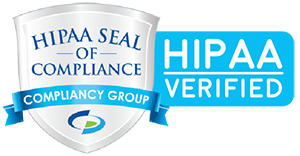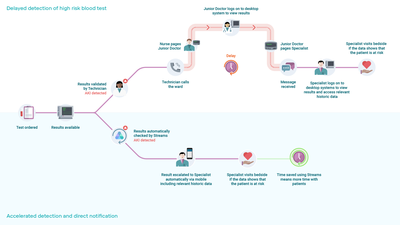
Data Strategy – Time to re-evaluate?
It seems a long time ago that the 3 V’s of volume, variety and
velocity was unleashed on the world to describe the evolution of Big Data that organizations were about to see. For years we have been told that we needed to get ready for a new Data Tsunami . We need
to be ready to store more data, take data that might not look like we
had traditionally from operational systems (such as textual unstructured
data) and handle data arriving more quickly. This was in the web era before mobile and social media took off.
Then we had the Big Data storm where all the V’s got bigger, faster
and more diverse. When Social Media arrived and the use of external data
to help make decisions became a norm the Big Data is everywhere, so much that we seem to have stopped talking about it.
An emerging ecosystem of options
To
deal with big data we needed new ways to store data. This led to the
emergence of a new ecosystem of database options to support different
needs. New model/schema databases were created with new query approaches to overcome gaps in what was available. Over the time most companies adopted a modified data
landscape including NoSQL databases rather than adapting “Hadoop Based Data lake”.What seems to be lacking is a sound understanding of the new COMP-LEXER landscape of data-sources and databases and urgent a need to have a fresh Vision and a new road map for Enterprises Data Strategy.
When Big Data is everywhere, Big Data is just another Data
Today most organizations have stopped thinking about “Big
Data” as a challenge that need to be addressed. Now it is just the data that they have to handle to meet
different business requirements. Importantly many of those organizations are moving the discussion on
to how they get value from that most valuable of assets. It is no
coincidence that focus of enterprises is to get Insights from the data rather than the handling 3Vs of Big Data. It is great that the focus is on deriving value from data. But I wonder if things happening too fast and some enterprise seem to over simplify their database landscape?
Understanding the Complexity Of Data Landscape
The
rapid evolution of business requirements has resulted in organizations
ending up with an data landscape that has become incredibly complex.
Many organizations are significantly overspending on managing that
complex bloated data landscape. The European Data Protection Regulation became applicable on May 25th,
2018 in all member states to harmonize data privacy laws across Europe.Organizations have a huge variety of databases including tabular relational
databases, columnar databases, NoSQL databases and the list just goes
on. Organizations have reached this point because they had to meet
their business needs. The databases they had were not able to support
what they needed to do when they needed to do it.
Tackling the Complexity Of Data Landscape
I believe it is time Organizations should STOP overhauling their data landscape and look for an approach that drives towards a new Data Architecture Vision.
It is time to take stock. Think simplification of the data landscape
while continuing to meet the business needs today and of the future. Defining a fresh Data Vision and simplification of Data Landscape will help with costs and
manageability and help adhere to new Data Protection Laws. By reducing complexity at
source organizations will be better set to use data to create value
rather than passing on chaos and complexity to value creators! The evolution of database technologies has been almost as relentless as the
progress in other areas of software. Today SQL Server can run on Linux. Would that make
you consider if an open source database is really better than an
enterprise grade best in class equivalent you can now use when security
and reliability around data is going to underpin everything you do? Look at the fact Graph processing is available in SQL Server and that
machine learning capabilities are now pervasive in databases with SQL
supporting Python and R. Would that change the need to create separate
data marts for analytics processing reducing complexity and data sprawl?
New deployment options
Finally lets look at the new deployment options.
- Flexible agreements that let you move to the cloud incrementally
- Moving from on premise to the
cloud unchecked lets you reduce the overhead of
hardware and having to deal with Capital Expenditure
- Using managed services in the cloud with powerful
SLAs to reduce administration overhead while enabling new modes of data
storage to support emerging business needs
- Building Hybrid solutions that span into the cloud as needed
- The capability to stand up what you want when you want it and have all that handled with super clear SLAs.
The
modern data estate is available on-demand. It spans all deployment modes, offers
almost every type of database you might need and helps you find the
right ones to meet your business needs. Options abound for
simplification, consolidation, modernization and agility within your
data landscape all without compromising on meeting your business needs.
Moving forwards
The forwards momentum in database capability and their deployment
options is staggering. Many organizations are not on top of that.
Previous decisions, even from as little as 12-18 months ago, can now be
revisited to see if your data landscape is running as efficiently as
possible.
It is a known fact that progressive organizations, some already
because of GDPR, are busy documenting their data assets. In most cases
better than ever before. Most of them are focused on what data is where
though and how to secure it and ensure it is used appropriately.
Many are not looking at which database it is being stored and if
migration and/or consolidation could make life much easier. Be sure to
think about your data landscape and consider how it can evolve.
Here are some questions:
- Have you recently looked at where you are storing your data and do you understand why you have it there? Have you evaluated if there a better option today?
- Do you know how much it is costing you to manage
and maintain your data estate and could reduced complexity reduce that?
If lowering IT costs is on your radar this is a sure fire way to find
ways to do that.
- Have you considered if your GDPR compliance would
be easier with a less complex environment to manage? Is database
consolidation an option you considered on your GDPR journey? If not why
not?
- When did you last evaluate which databases need to be on-premise,
which can be deployed in a hybrid mode and which should be able to be
totally moved to the cloud? If not recently you may be constraining your
potential based on old options and adding additional costs you do not
need.
-
In Conclusion
A modern data estate will provide options to meet you where you need it to.
As you consider your data landscape moving forwards you might want to
think about if you are missing a trick by not thinking big picture and
looking for vendors who can, perhaps together with partners, cover the
entire data estate and all that entails.I have written about need for a Vision & a Road Map for an enterprise and that applies for Data Strategy. as well. The speed at which technologies are evolving and the rate at which new technology get adopted every CTO and CIO should review the Enterprise Data Vision every year and do the necessary change to the Road Map.
























